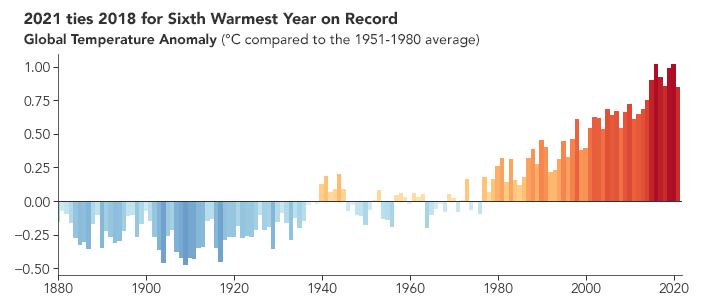Climate Change
Credit: Kristin Laidre
The Intergovernmental Panel on Climate Change and the Arctic Climate Impact Assessment have both predicted that the Arctic is extremely vulnerable to projected climate change. The most pronounced changes to the Arctic are likely to include increased temperatures and changes in precipitation patterns: both which will affect sea ice patterns and ultimately, polar bears. Polar bears will likely be shifted pole-ward if the sea ice retreats. As a matter of fact, according to new scenarios presented by the Nansen Environmental and Remote Sensing Centre, the polar ice cap will disappear almost entirely during summer in the next 100 years.
Because polar bears feed almost exclusively on ice-associated seals, changes in the sea ice that affect access to prey will have a negative effect on the bears. In particular, if more snow falls, polar bears are less successful at breaking into the birth lairs of ringed seals. If too little snow falls, ringed seal pups are born on the sea ice without a lair, and this makes them very vulnerable to predation by polar bears and arctic fox. With less food, polar bears will fail to reproduce more often and give birth to smaller young that have higher mortality rates.

Credit: NASA Earth Observatory
Polar bears are totally reliant on the sea ice as their primary habitat. If climate change alters the period of ice cover, bears may be forced on shore for extended periods and forced to rely on stored fat. If these periods become excessively long, mortality will increase. Such changes are thought to be occurring in western Hudson Bay. Further, if the ice changes in character such that there is more open water, young cubs which are unable to swim long distances may suffer greater mortality. Sea ice is also used for access to den areas and if ice patterns change, existing den areas may be unreachable. Another factor is that in some areas, warmer temperatures and higher winds may reduce ice thickness and increase ice drift. Because polar bears must walk against the moving ice (like walking the wrong way on an escalator) increased ice movements will increase energy use and reduce growth and reproduction.
Another problem is unusual warm spells during the period that females are on land in dens. If severe rain events occur during the den period, it is possible that snowbanks slump and can kill mothers and their cubs. Such an event was observed in northern Canada and unusual rain events have been noted in western Hudson Bay and Svalbard with unknown consequences.
Polar bears are a keystone species in ice-covered Arctic marine ecosystems and alterations to the distribution, density or abundance of this top predator will likely have impacts throughout the arctic ecosystem. There is little doubt that polar bears and other ice-inhabiting marine mammals in the Arctic, are being, or will be, negatively affected by the effects of climate change via changes to their habitats.
